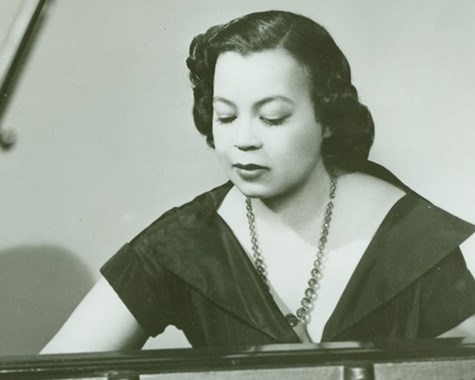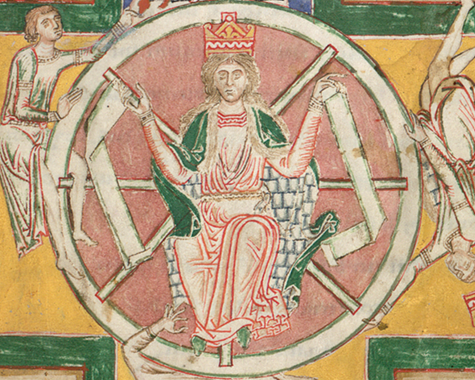Posted30 Jan 2023
- In
The unifying power of choral music, from Carmina Burana to Credo
Margaret Bonds’ Credo (1965) and Carl Orff’s Carmina Burana (1937) are two glorious pieces of 20th-century choral music, powerful multi-movement works inspired by cosmic forces. However, they make an unlikely pair. Credo is relatively unknown, while Carmina Burana has been performed thousands of times. Credo is about the fundamental belief in racial equality and Carmina Burana centers on drinking, dancing, and carnal love. Together, the two pieces expose humanity in all its complexity: sometimes uplifting, sometimes painful, but endlessly interesting.
The text of Credo was written by W.E.B. Du Bois in 1904. Modeledafter the Nicene Creed, a recitation of Christian beliefs regarding Jesus’ life, death, and resurrection, Du Bois’ Credo is about belief in God, Jesus, and humans. “Especially, do I believe in the Negro Race,” he writes, “in the beauty of its genius, the sweetness of its soul, and its strength in that meekness which shall yet inherit this turbulent earth.”
Du Bois denounces war and praises hard work, liberty, education, and patience. Credo was so personally important to Du Bois that it became the preface to his autobiography. For some of Du Bois’ readers, Credo became a personal mantra that they carried with them on small, printed cards. But Credo stayed firmly in the realm of written word until it was set to music 60 years later.
Margaret Bonds (1913-1972) was born into a musical family. Her mother, Estella C. Bonds, was an organist for a Baptist church, and she realized that her daughter had a unique aptitude for music when Margaret composed her first piece at the age of 5. Growing up in Chicago, Bonds was surrounded by eminent musicians who were friends of her mother, including the great composer Florence Price. Bonds went on to receive formal training at Northwestern University and Juilliard.

Bonds composed Credo in 1965, and it premiered in 1967. In setting Du Bois’ Credo to music, Bonds offered her own powerful interpretation of the text. She turned Du Bois’ 502 words into 22 minutes of music for chorus, soprano and baritone soloists, and piano (the full orchestral version was not performed until 1972). Bonds’ setting emphasizes important phrases in Du Bois’ text through repetition and makes sure that every word can be understood. She manipulated Du Bois’ nine-item list of beliefs into seven movements, revealing her thoughts about connections between “pride of race and lineage” and “humble reverent service” (Movement 3) and “liberty for all men” and “training of children” (Movement 6). These links recall Bonds’ pride in and service to the Black community and her years spent teaching children piano, composition, and sight-singing, providing them with the tools they needed to live free lives, full of music.
Credo also displays Bonds’ great skill in combining elements of different musical genres, which she developed through her diverse professional experiences accompanying dance classes, editing popular vocal tunes, writing for singers such as Leontyne Price, and collaborating on film scores. Her facility with diverse styles allows her to be especially sensitive to the requirements of the text. The musically similar first and last movements, which focus on fundamental beliefs in God and patience, are forceful and declarative, while the second movement, about the “beauty of [the] genius” of the “Negro race” is gentle and lilting. The fourth movement, about the Devil, harnesses relentlessly dissonant, crashing chords, while the fifth movement, whose text begins “I believe in the Prince of Peace,” quotes the famous Christmas tune: “Hark! The Herald Angels Sing.”
Despite the potentially wide appeal of Credo,the work has rarely been performed or recorded, although scholars such as Temple University’s Dr. Rollo Dilworth have studied it at length. The score was not published until 2020, 55 years after it was composed.
In stark contrast to Credo, Carmina Burana is wildly popular.The piece is just under an hour long, but it is nonetheless a large-scale piece with tremendous impact. Perhaps this is why its framing chorus, O Fortuna, has been used on upwards of 7,000 movie and television soundtracks, according to the Internet Movie Database (IMDb).
The text of Carmina Burana consists of excerpts from Latin, German, and French song lyrics found in a 13th-century manuscript. Most manuscripts from this time contained only sacred texts because the Catholic Church’s resources were needed to fund the materials and skilled labor needed to produce them. Carmina Burana is a novelty: although its texts occasionally refer to Christian beliefs, they mostly focus on sex, drinking, and pagan ideas of Fortune and Love.
The Carmina Burana manuscript came to light during a nationalistic revival of interest in the Middle Ages in late 19th-century Germany, but composer Carl Orff (1895-1982) seems to have been attracted to it because of its unique subject matter and its critical, even ironic stance towards traditional themes of courtly love and Catholicism.
Orff was born in Munich, just 18 years before Margaret Bonds was born in Chicago. The stories of their musical development have much in common: both began their studies as children at home with their parents, both became proficient in many styles and genres, and both had a passion for teaching.

Orff’s career developed as Hitler rose to power, and Carmina Burana’s place in the politics of Nazi Germany is unclear. Carmina Burana was a favorite of Hitler and his party, but Orff strongly denied that the work had a nationalistic agenda. Orff walked a fine line in his political affiliations, never joining the Nazi party but also never denouncing it, but much of Orff’s financial and critical success stemmed from commissions by, and positive reviews from, prominent members of the party.
Whatever the ultimate purpose of Carmina Burana, it thrives on dramatic contrasts, bouncing between boisterous proclamations and giddy whispers, twirling dances and dying swans over the course of its 25 movements, stubbornly resisting interpretation as either serious or comic. Orff’s musical influences for the piece include Medieval song, German folk music, bel canto opera, and Stravinskian modernism. It is scored for a large mixed-voice adult choir, a boys choir, and three soloists: a soprano, a tenor, and a baritone, as well as an expansive and percussion-heavy orchestra, including sleigh bells, castanets, a gong, 3 glockenspiels, 2 pianos, and a celesta.
Credo and Carmina Burana have never before shared the stage, so this performance offers a unique opportunity to hear the pieces performed together. Their similarities and differences invite us to think about hierarchies of power embedded into music composition, publication, and performance.
It is important for us to reflect on the fact that Carmina Burana, written by a white, German man, has had no trouble receiving political, critical, economic, and popular support. Credo, on the other hand, was written by a Black, American woman – and although Bonds was talented and well-connected in the musical world, she never received the institutional or popular support that Orff did. Her final choral work, Credo, languished in relative oblivion until it was published in 2020 by Hildegard Publishing Company, an organization whose mission is to present the often-neglected voices of female composers to modern audiences.
Finally, Credo and Carmina Burana work together to demonstrate the power of choral voices to draw in an audience. It is thrilling to hear so many voices singing together as one; communal singing has been scientifically proven to promote feelings of unity and joy among participants, and even listeners. Think about it: choral music, including Carmina Burana, is often used in advertisements on the radio or television to convince you to buy various products. A chorus singing the national anthem at a sports game can promote feelings of patriotism for fans in the stands. A choir singing in church can uplift the congregation. If choral music has the power to make people unite around a cause, it can be used for good or for evil. This program gives us an opportunity to consider how we might use choral voices in the future to effect positive change in the world.
Dr. Lily Kass is Opera Philadelphia's Scholar in Residence.
This program note appeared in the performance program for Carmina Burana + Credo, February 3 & 5, 2023.
Leave your comment below.

 Facebook
Facebook Twitter
Twitter More
More